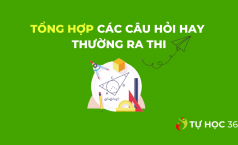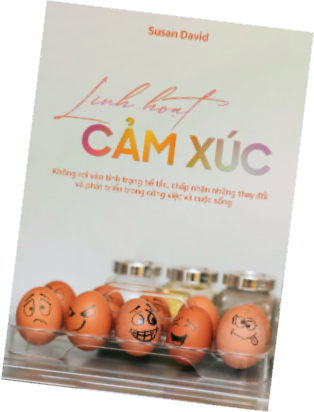Successful students often do the followings while st

Câu hỏi
Nhận biếtRead the following passage and mark the letter A, B, C, or D on your answer sheet to indicate the correct answer to each of the questions from 30 to 34. Successful students often do the followings while studying. First, they have an overview before reading. Next, they look for important information and pay greater attention to it (which often needs jumping forward or backward to process information). They also relate important points to one another. Also, they activate and use their prior knowledge. When they realize that their understanding is not good, they do not wait to change strategies. Last, they can monitor understanding and take action to correct or “fix up” mistakes in comprehension. Conversely, students with low academic achievement often demonstrate ineffective study skills. They tend to assume a passive role, in learning and rely on others (e.g., teachers, parents) to monitor their studying, for example, low-achieving students often do not monitor their understanding of content; they may not be aware of the purpose of studying; and they show little evidence of looking back, or employing “fix-up” strategies to fix understanding problems. Students who struggle with learning new information seem to be unaware that they must extent effort beyond simply reading the content to understand and remember it. Children with learning disabilities do not plan and judge the quality of their studying. Their studying may be disorganized. Students with learning problems face challenges with personal organization as well. They often have difficulty keeping track of materials and assignments, following directions, and completing work on time. Unlike good studiers who employ a variety of study skills in a flexible yet purposeful manner, low-achieving students use a restricted range of study skills. They cannot explain why good study strategies are important for learning; and they tend to use the same, often ineffective study approach for all learning tasks, ignoring task content, structure or difficulty.(Source: Adapted from Study Skills: Managing Your Learning — NUI Galway
Câu 1: What is the topic of the passage?
A. Successful and low-academic achieving students
B. Successful learners and their learning strategies
C. Study skills for high school students
D. Effective and ineffective ways of learning
Câu 2: The word “prior” in the first paragraph is closest meaning to ______?
A. important
B. earlier
C. forward
D. good
Câu 3: According to the passage, what can be learnt about passive students?
A. They depend on other people to organize their learning
B. They are slow in their studying
C. They monitor their understanding
D. They know the purpose of studying
Câu 4: Which of the followings is NOT an evidence of monitoring studying?
A. Being aware of the purpose of studying
B. Monitoring their understanding of content
C. Fixing up mistakes in understanding
D. Looking at their backs
Câu 5: In compared with low-achieving students, successful students use______.
A. aimless study techniques
B. various study skills
C. restricted strategies
D. inflexible study ways
Đáp án đúng:
Lời giải của Tự Học 365
Đáp án câu 1 là: DGiải chi tiết:
Chủ đề của bài đọc là gì?
A. Những học sinh có kết quả học tập tốt và những học sinh có kết quả học tập kém
B. Những người học thành công và chiến lược học tập của họ
C. Các kỹ năng học tập cho học sinh trung học
D. Cách học tập hiệu quả và không hiệu quả
Thông tin: Successful students often do the followings while studying… Conversely, students with low academic achievement often demonstrate ineffective study skills.
Tạm dịch: Những học sinh có kết quả tốt thường làm những điều sau trong khi học… Ngược lại, học sinh với thành tích học tập thấp thường thể hiện những kỹ năng học tập không hiệu quả.
Đoạn 1: Nói đến những phương pháp học của học sinh có kết quả học tập tốt
Đoạn 2: Nói đến những cách mà học sinh có kết quả học tập kém sử dụng trong việc
Chọn D
Đáp án câu 2 là: BGiải chi tiết:
Từ “prior” (trước đó) trong đoạn đầu có nghĩa gần nhất với từ nào sau đây ________.
A. important (adj): quan trọng
B. earlier (adj): sớm hơn
C. forward (adj): ở trước, phía trước
D. good (adj): tốt, tuyệt
=> prior = earlier
Thông tin: Also, they activate and use their prior knowledge.
Tạm dịch: Ngoài ra, họ nhớ lại và sử dụng kiến thức trước đó của họ.
Chọn B
Đáp án câu 3 là: AGiải chi tiết:
Theo bài đọc, có thể biết được những gì về học sinh thụ động?
A. Họ phụ thuộc vào người khác để sắp xếp việc học tập cho họ
B. Họ rất chậm trong việc học
C. Họ theo dõi được việc tiếp thu bài của họ
D. Họ biết mục đích của việc học
Thông tin: They tend to assume a passive role, in learning and rely on others (e.g., teachers, parents) to monitor their studying
Tạm dịch: Họ thường đóng vai trò thụ động trong việc học và thường phụ thuộc vào những người khác (ví dụ như giáo viên, phụ huynh) để theo dõi việc học của học
Chọn A
Đáp án câu 4 là: DGiải chi tiết:
Điều nào sau đây KHÔNG phải là bằng chứng của việc theo dõi tình hình học tập?
A. Nhận thức được mục đích của việc học
B. Theo dõi sự hiểu biết của họ về nội dung học
C. Sửa những điểm sai lầm trong việc tiếp thu bài
D. Nhìn vào lưng họ
Thông tin: for example, low-achieving students often do not monitor their understanding of content; they may not be aware of the purpose of studying; and they show little evidence of looking back, or employing “fix-up” strategies to fix understanding problems.
Tạm dịch: ví dụ, học sinh có thành tích thấp thường không thể tự theo dõi sự tiếp thu của họ về nội dung bài học, họ có thể không nhận thức được mục đích của việc học, và ít có dấu hiệu cho thấy việc họ nhìn lại bài hoặc sử dụng các chiến lược "sửa chữa" để khắc phục các vấn đề về việc hiểu bài.
Chọn D
Đáp án câu 5 là: BGiải chi tiết:
So với các học sinh đạt thành tích thấp, những học sinh thành công trong việc học sử dụng ________.
A. phương pháp học tập không có mục đích
B. nhiều kĩ năng học tập khác nhau
C. những chiến lược hạn chế
D. cách học tập không linh hoạt
Thông tin: Unlike good studiers who employ a variety of study skills in a flexible yet purposeful manner, low-achieving students use a restricted range of study skills.
Tạm dịch: Không giống như học sinh có thành tích tốt sử dụng nhiều kỹ năng học tập khác nhau một cách linh hoạt nhưng theo một cách có chủ đích, học sinh có thành tích thấp chỉ sử dụng một số kỹ năng giới hạn.
Chọn B
Luyện tập
Câu hỏi liên quan
-

Mark the letter A, B, C, or D on your answer sheet to indicate the correct answer to each of the following questions.
Peter bought a car as a present for his wife two weeks ago.

Mark the letter A, B, C, or D on your answer sheet to indicate the word whose underlined part differs from the other three in pronunciation in each of the following questions.

Mark the letter A, B, C, or D on your answer sheet to indicate the correct answer to each of the following questions.
A lot of research in medical science has been to improve human health.

Mark the letter A, B, C, or D on your answer sheet to indicate the correct answer to each of the following questions.
Last week, we an interesting film about the animal world.

Mark the letter A, B, C, or D on your answer sheet to indicate the correct answer to each of the following questions.
There has been growing public concern about the use of chemicals in food recently.

Mark the letter A, B, C, or D on your answer sheet to indicate the correct answer to each of the following questions.
Harmful environmental factors can the development of certain diseases.

Mark the letter A, B, C, or D on your answer sheet to indicate the correct answer to each of the following questions.
The success of the company in such a market is remarkable.

Mark the letter A, B, C, or D on your answer sheet to indicate the correct answer to each of the following questions.
The higher the cost of living is, .

Mark the letter A, B, C, or D on your answer sheet to indicate the correct answer to each of the following questions.
The dog my father gave me is very lovely.

Mark the letter A, B, C, or D on your answer sheet to indicate the word that differs from the other three in the position of primary stress in each of the following questions.

